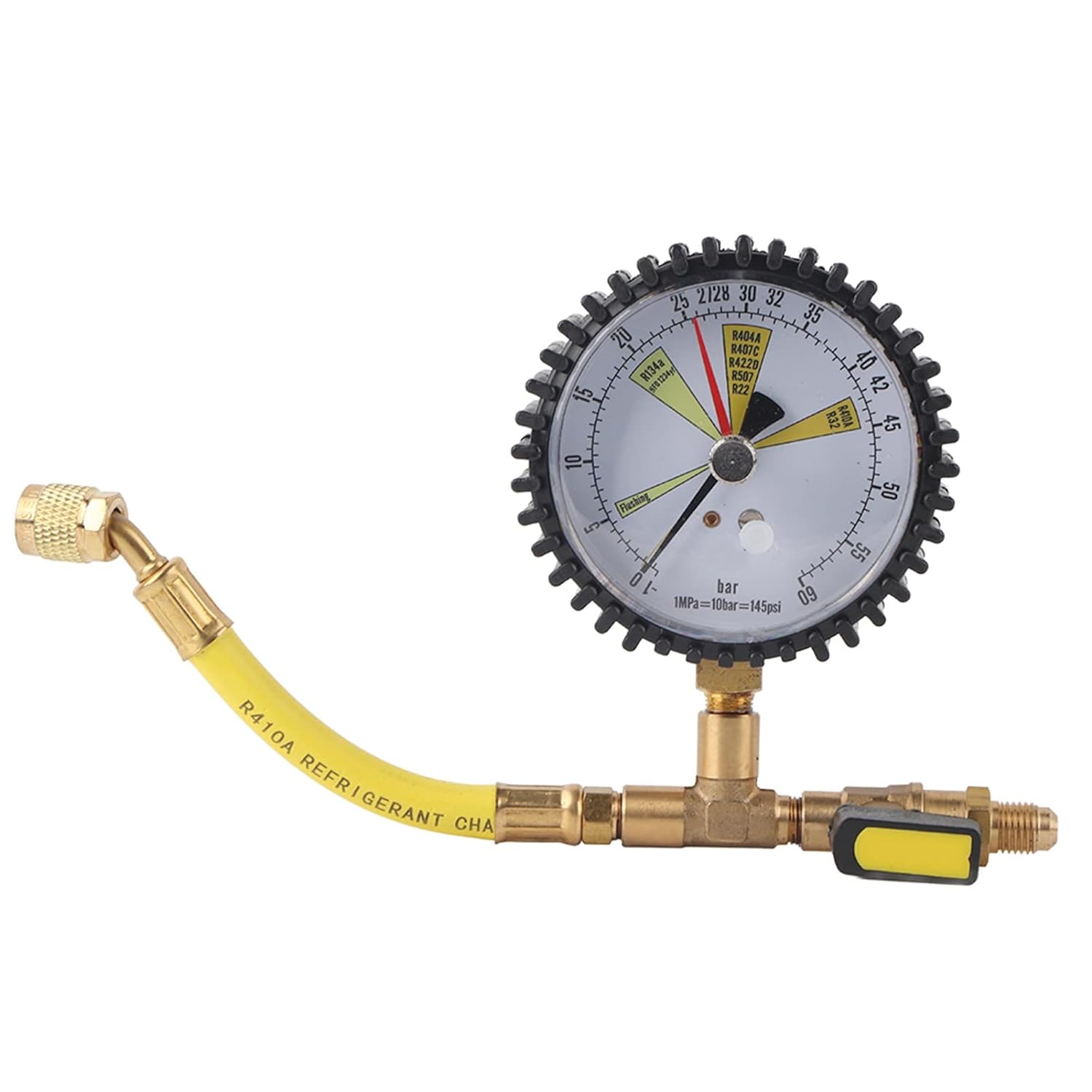Professional installers would typically use Oxygen Free Nitrogen (OFN) to pressure test a system, but OFN is hard to obtain in small cylinders suitable for individual use.
Argon, an inert non-flammable gas, is more readily available in small cylinders as a welding supply and can be used as an alternative to perform a pressure test.
You’ll need to provide your own Argon gas bottle and regulator. The hose and gauge we provide has an adapter fitted to suit the 1/4" BSP thread found on the outlet of most small regulators. We don’t provide a regulator as part of the kit for safety reasons (even small disposable bottles of Argon are still very high pressure and it’s hard to know if the regulator may have been used in excess of rated pressure on previous rentals).
Please note that most small regulators designed for disposable bottles are not designed to accommodate high output pressures and typically only rated to around 4-5bar (58-73 PSI) on the output side. Ensure you’re familiar with the specifications of the regulator you use.
Whilst an extended test at 60PSI should be sufficient to identify all but the smallest leaks, an R32 system can operate around 600PSI max pressure when in heating mode and it’s possible for a leak to exist that only manifests in these conditions.
Apply the supplied leak detection fluid around flare fittings once pressurised, if the fittings remain free of small bubbles after a few minutes then the fittings are likely leak free (and the subsequent vacuum test should confirm this). Any leaking fittings should be tightened in the first instance, but the flares remade if maximum recommended torque is reached and leaks persist.


